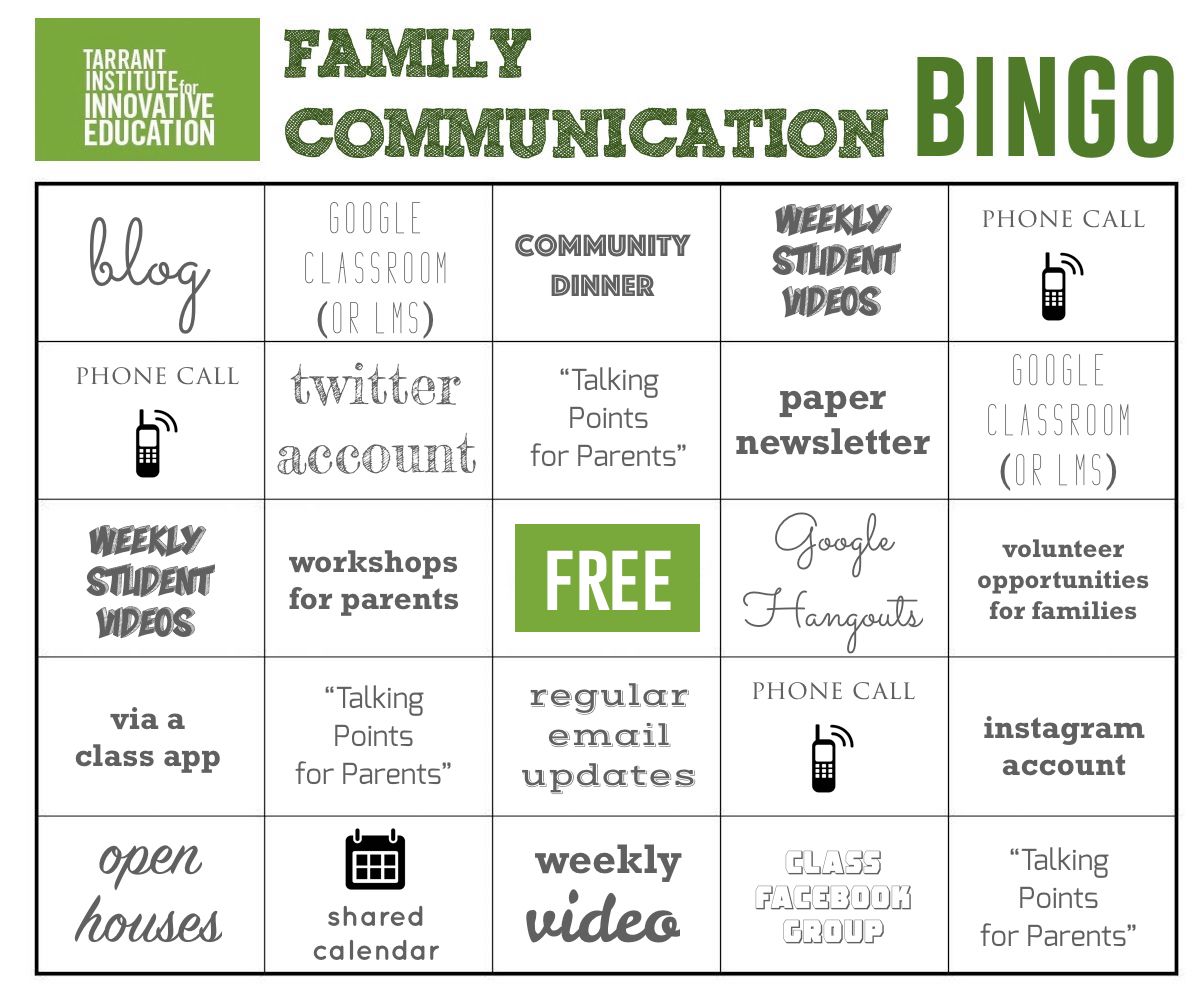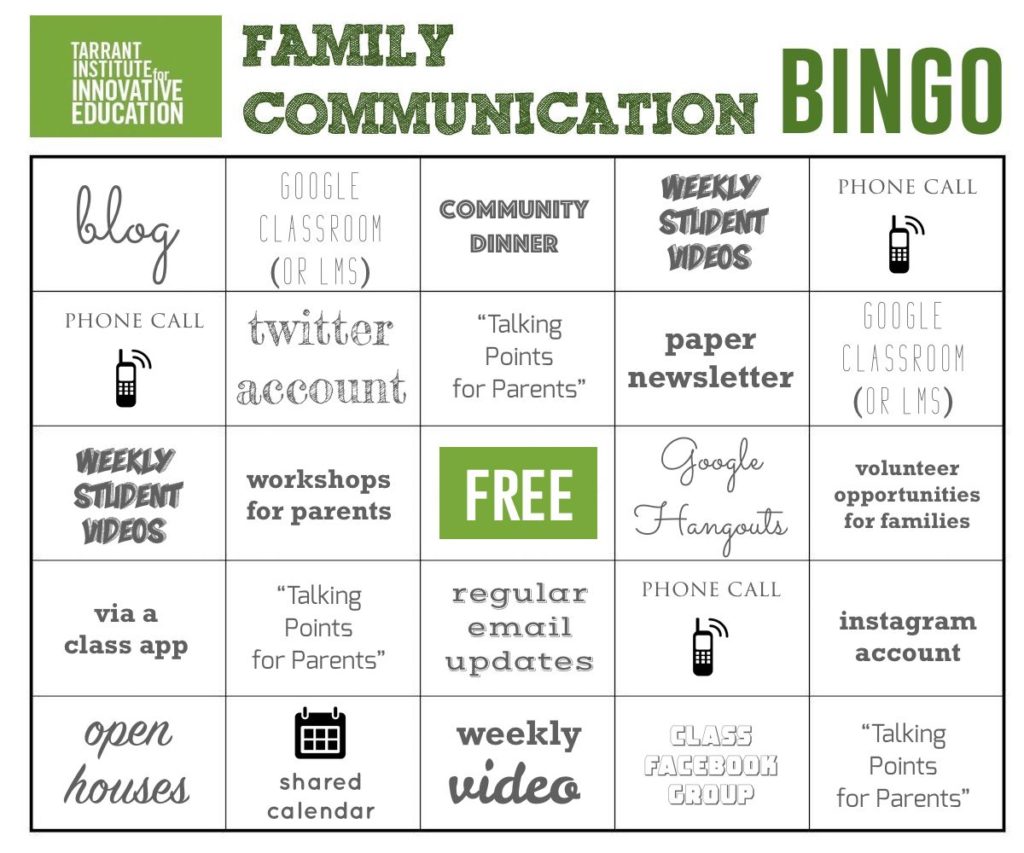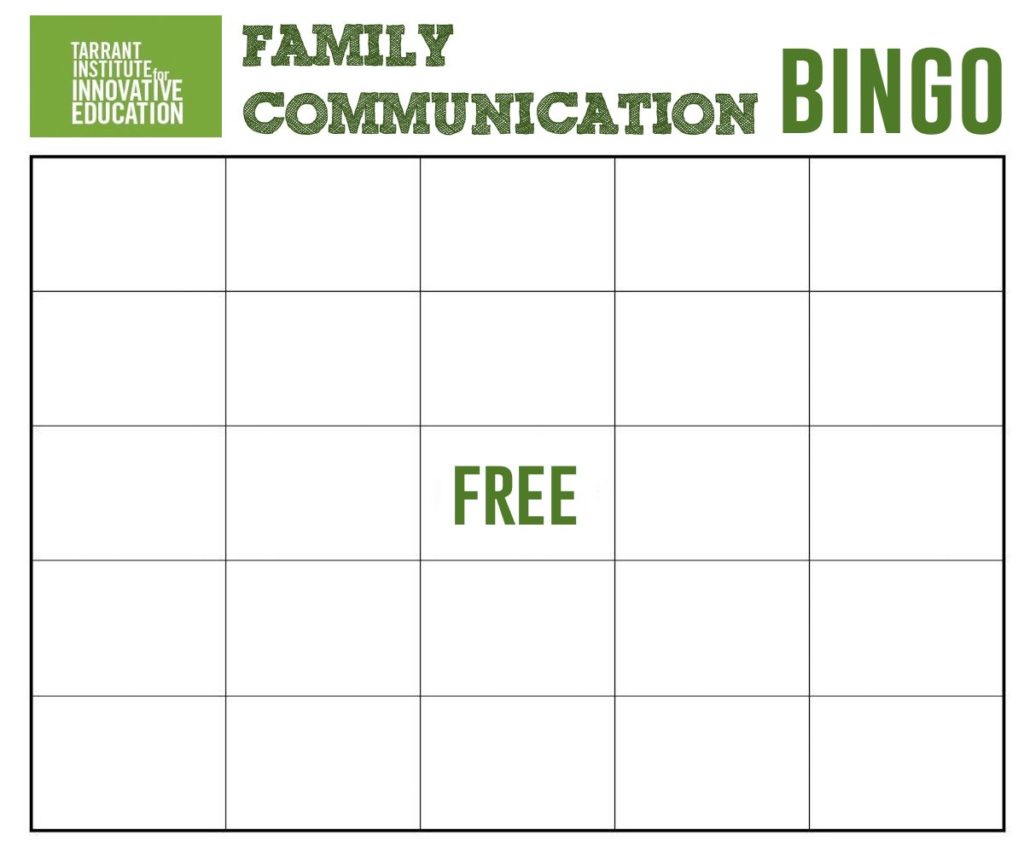BINGO.
Communication with student’s families outside of student led conferences (SLC) is vital. Giving parents the information they need in order to protect that time for the student voice to take the lead in sharing the learning, goals, and needs is essential. Let’s take a quick look at the why, when, and the how, with a little quality brainstorming.
Why?
Family engagement…
When we engage families in their students’ education the benefits are numerous. The findings from the 2017 report from the Nellie Mae Education Foundation on Family Engagement (Wood, Bauman, Rudo, Dimock 2017) suggests:
- Schools that reach out to families and the community and build strong parent-school relationships also were found to have a positive impact on students;
- Empowering parents to exercise leadership within a school as an approach also has shown positive results;
- Engagement at home is a statistically significant predictor of grades and days missed at school. Students with more engaged parents had higher academic achievement and fewer missed days of school.
- Increased communication effort with families can have a positive impact on school success and student outcomes;
- Consequently, employing multiple strategies in a program will likely increase the odds of getting families to engage and of positively affecting school and student outcomes.
…and equity.
We cannot assume that all students have the same opportunities. Additionally, we cannot assume all parents have equal access to information to support their learners. That’s where you come in. Schools can provide a tailored stream of communication. All of which can increase the possibility for students, educators, and parents to engage in conversations about learning.
When?
- often
- frequently
- regularly
- routinely
- consistently
All of the above!
Communication prior to the student-led conference should be considered a necessary component of a successful conference. There’s a tremendous amount of information parents want to know. But this is really a year-round need.
How?
BINGO, people. B. I. N. G. O.
And family outreach was its name-o.
Let’s step through them together.
- Class blog. Private or public, password-protected or open for all, a regularly updated class blog can be a rich source of information from families.
- Google Classroom (or other LMS). Most LMSes have a way to invite parents in and make channels of communication available.
- Community dinner. Make it a class or team project to plan a dinner for all families. Even if you just go the Stone Soup route.
- Weekly student videos. Give students a low-entry prompt to sit down and each week, make a short video message for their family. Middle level educator Joe Speers provides an amazing (and short) blueprint for this activity called The Best Part of My Week.
- The Phone Call. Picking up the phone and calling a family, especially with good news about their student, still rocks.
- twitter or instagram account. As a class or team, you can maintain a twitter or instagram account that shares quick photos or videos with families. Keep it open or make it private at your discretion.
- “Talking Points for Parents”. One of the hard things about being a parent is not knowing what to ask your student besides, “How was your day at school?” Jump on in there and send parents regular Talking Points: questions they can ask that pertain to specific activities their students are doing. “How are the trout coming along? Will they be ready for release day, y’think?” “How’s the bike trail project coming along? Have y’all started digging yet, or are you still working on the map? …Can I see it?”
- A Paper Newsletter. It’s great practice to have a mix of tech-rich and non-tech activities at the outreach ready. Think equity: do all your families have bandwidth, or devices, or are familiar with all the platforms? The paper newsletter is nice and non-techy, and some of your students are just itching to do some graphic design. Itching.
- Workshops for parents. A little more time-intensive, but worth it. Every so often, organize a workshop to help parents understand a little more about what’s going on in the classroom. “Get Into Google Classroom”, for instance. “What’s new with flexible pathways?”
- Google Hangouts. Or Facetime, just a quick videoconference can take phone calls to the next level.
- Volunteer opportunities for families. Everyone can use an extra hand, now and then.
- Class app. Middle school educator Jared Bailey developed a quick web-based app families could install on their phones that provided an on-the-go showcase for student work, student comments and progress. And if that sounds intimidating, does one of your students — or one of their parents — want to build one?
- Regular email updates. Email is not dead, it was just briefly resting for a moment there. The email newsletter, distributed either via bcc: or through Mailchimp or Constant Contact, can be a fun writing exercise for giving group updates for your families. Let it all out, Shakespeare.
- Open houses. Throw the doors open and see who shows up. Invite them in and chat. Maybe they’ll bring cake!
- Shared calendar. At the Mater Christi School, in Burlington VT, the school creates and shares Google Calendars with families. That way they know about upcoming deadlines, ongoing projects, planned school events — the whole shebang.
- Weekly (teacher) videos. Education rockstar Michael Berry models this incredibly well with his series of (more than) weekly videos.
- Class Facebook Group. Lock it down, keep it open, but tons of parents are on facebook, and it’s a great way to get families talking not just with you, but with each other.
A few quick rules:
You’ll note that a couple strategies are on the card more than once. Those are strategies that have a relatively low bar to entry, or are particularly powerful. Like a phone call, or a weekly student video, for example. So yes, if you do either of those, you can check them off everywhere they appear on the card.
Also, if you let your students run the class twitter or instagram account? You can mark off the additional square of your choice. An extra freebie for your awesomeness.
Hi, there’s homework.
Now, we’re making available a package of bingo cards for y’all, to get you inspired with these 17 different ways you can communicate with students’ families. As an individual or team, break out the bingo marker and daube the strategies you are using. Yes, there are extra points for yelling.
Download your package of bingo cards at this link (.pdf).
We have online and printable versions of the filled card, above, as well as a blank bingo card template. That’s right, you and your team can sit down and choose from any of the SEVENTEEN strategies above, or write in your own. Pin them up in your rooms or tack them up in your Schoology and check off each one as you use it. Print or post additional cards as needed.
Or print them for your students and encourage them to fill them out. Give them ones you’ve filled out and ask them to check off what they get through.
But wait, there’s more.
The first 10 folks to complete a BINGO and send a picture to our Instagram or Twitter account with the hashtag #familycommunicationbingo will win your choice of a Tarrant Institute journal or a Tarrant Institute water bottle.






